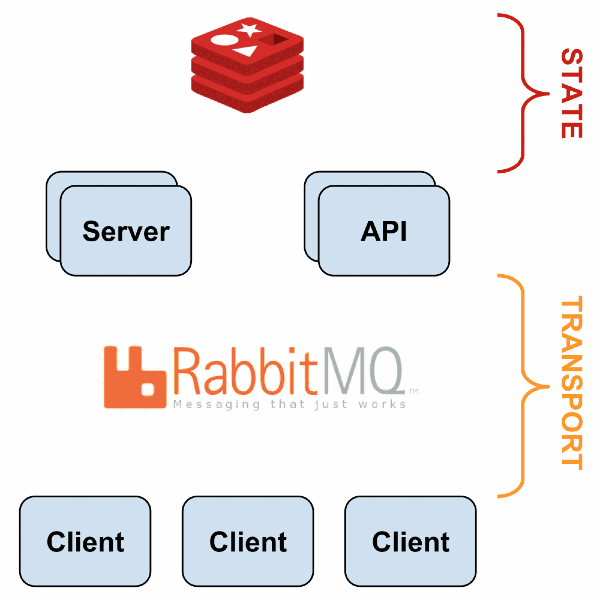Architecture
Architectural Overview
One of advantages that Sensu provides over other monitoring solutions is its architecture, which facilitates the execution of service checks, collection of metric data, and event processing at scale. This architecture is comprised of the following components:
Architectural Diagram

Secure Transport
Sensu services use a message bus (e.g. RabbitMQ) to communicate with one another (technically speaking, the Sensu services don’t actually communicate with each other – they only communicate with the message bus). As of Sensu Core version 0.13 this message bus communication in Sensu has been abstracted as the Sensu Transport, making it possible to leverage alternate transport solutions in place of RabbitMQ (the default Transport). Sensu services requires access to the same instance of the defined Sensu Transport (e.g. a RabbitMQ cluster) to function. Sensu check requests and check results are published as “messages” to the Sensu Transport, and the corresponding Sensu services receive these messages by subscribing to the appropriate subscriptions.
Data Store
Sensu leverages a data store for data persistence. Only the Sensu server, API, and dashboard services require access to the data store — the Sensu client (monitoring agent) does not. By storing data in Redis, the Sensu services themselves can remain stateless. Although Sensu is designed to route telemetry data to external time-series databases (e.g. Graphite, Librato, InfluxDB, etc), Sensu does store the following state data:
- Client registry
- Check history
- Event registry
- Stashes (a key-value store provided by the Sensu API)
Check Execution Scheduler
Sensu offers two distinct check execution schedulers: the Sensu server, and the Sensu client (monitoring agent). The Sensu server schedules and publishes check execution requests to client subscriptions (via a Publish/Subscribe model). The Sensu client (monitoring agent) schedules and executes “standalone” checks (on the local system only). Sensu’s execution schedulers are not mutually exclusive, so monitoring checks may be configured for both of Sensu’s schedulers (the Sensu server and Sensu client), and Sensu will ensure that the corresponding checks are executed on the appropriate systems.
Monitoring Agent
The Sensu client is a fully featured monitoring agent which provides the following features:
- dynamic self-registration
- client subscriptions (for monitoring checks configured via the Publish/Subscribe model)
- a local check execution scheduler
- an execution platform for monitoring the local system & services and/or external resources
- an input socket for accepting input from external services.
Event Processor
The Sensu server is a scalable event processor that processes event data and takes action. Sensu’s event processing capabilities include:
- Registering and de-registering clients
- Processing check results
- Processing monitoring events using filters, mutators, and handlers
Sensu’s event processor is designed to scale along with the applications and infrastructure it is monitoring. Although Event Handlers are executed locally by the Sensu server, multiple instances of the Sensu server can be run without any additional configuration. Sensu provides built-in task election to avoid scheduling conflicts between Sensu servers, and the Sensu transport distributes (via round-robin) check results between Sensu servers for processing, which provides load-balancing.
RESTful API
Sensu provides access to monitoring data and core functionality via a RESTful HTTP JSON API, including:
- A Clients API for accessing Client data and adding/removing clients
- A Checks API for accessing Check configuration data and publishing check requests
- An Events API for accessing event data and resolving events
- A Results API for accessing check result data and publishing check results
- An Aggregates API for accessing aggregated check result data and deleting aggregate data
- A Stashes API for providing read/write access to Redis’ underlying key-value functionality
